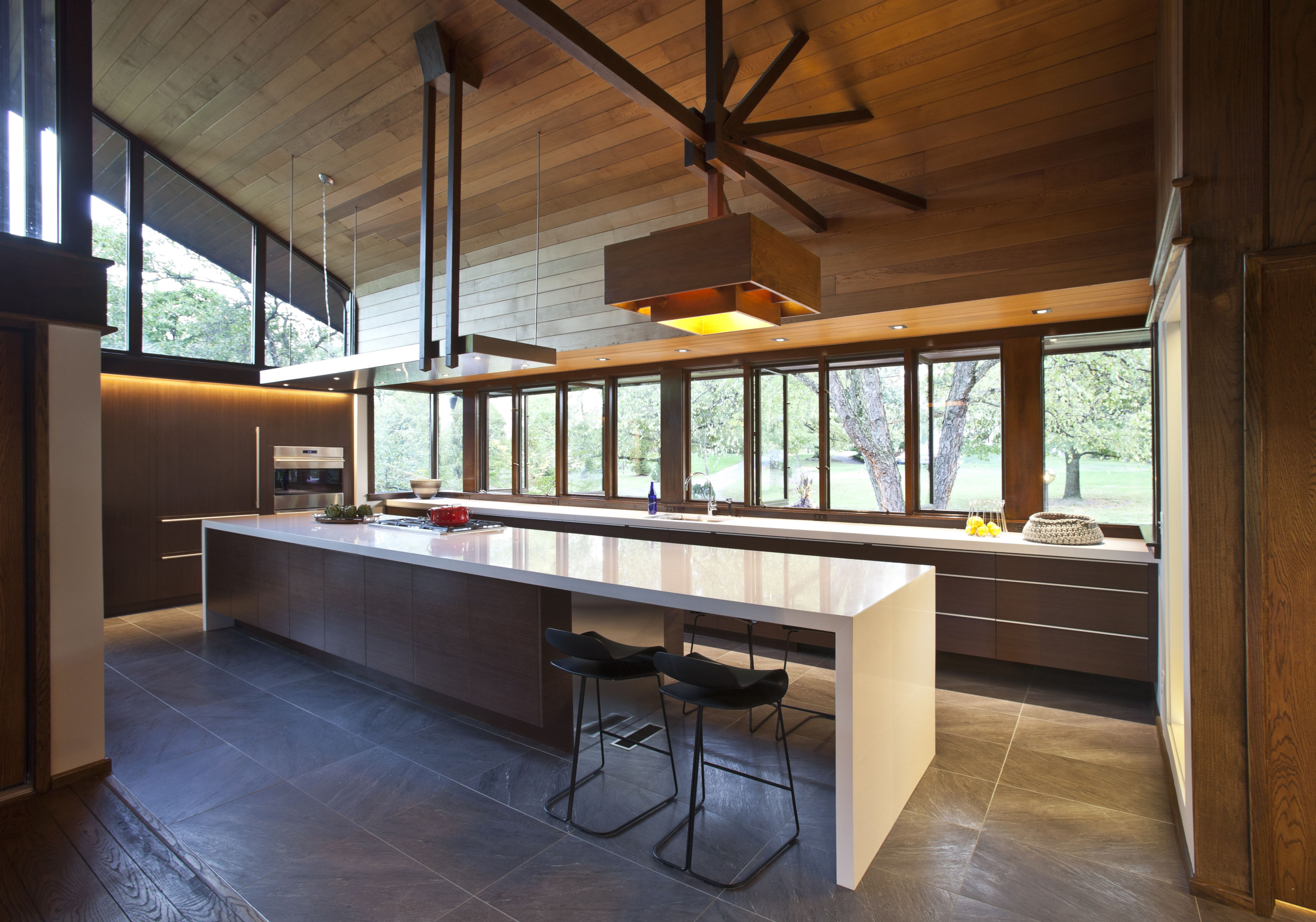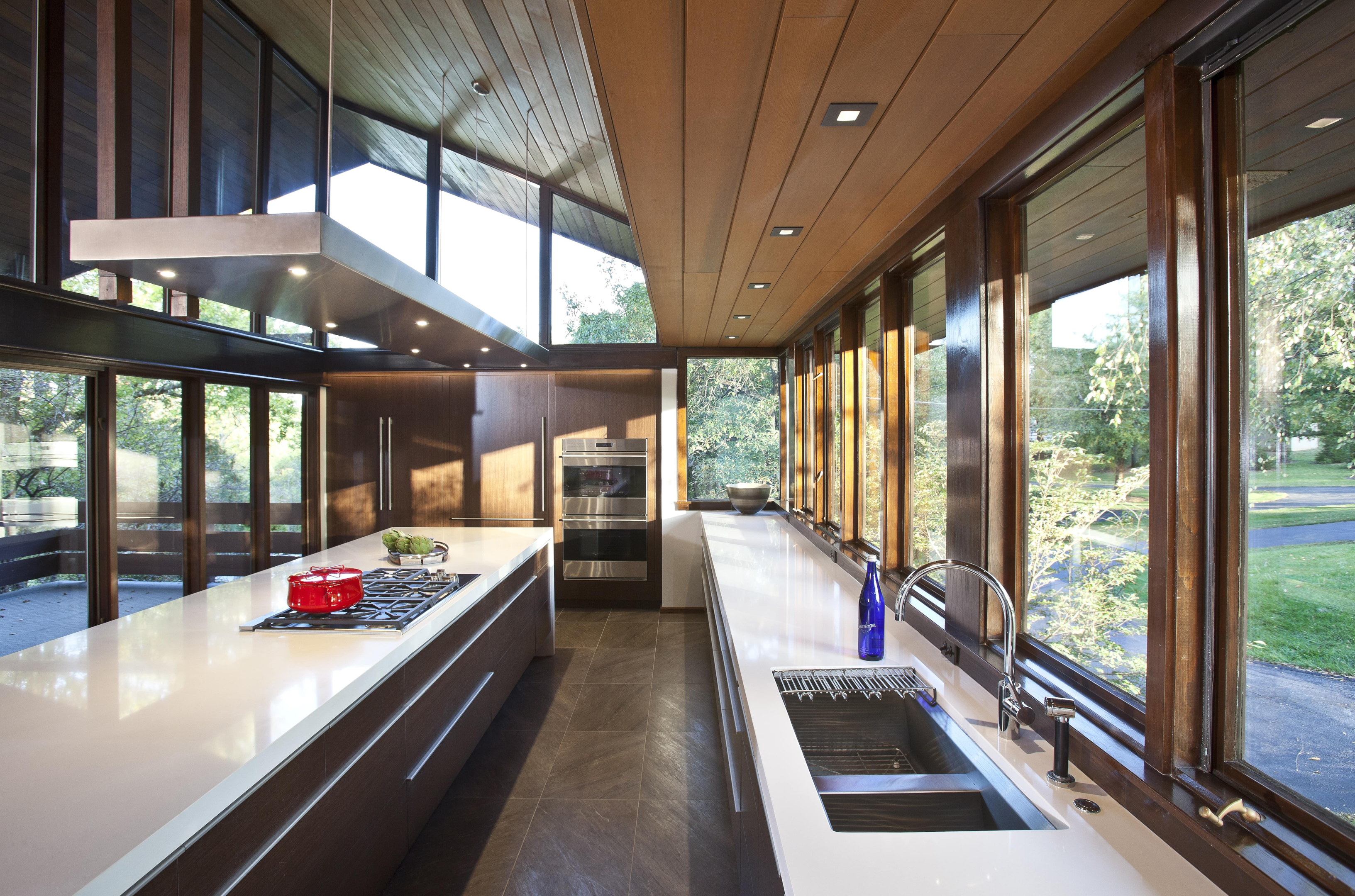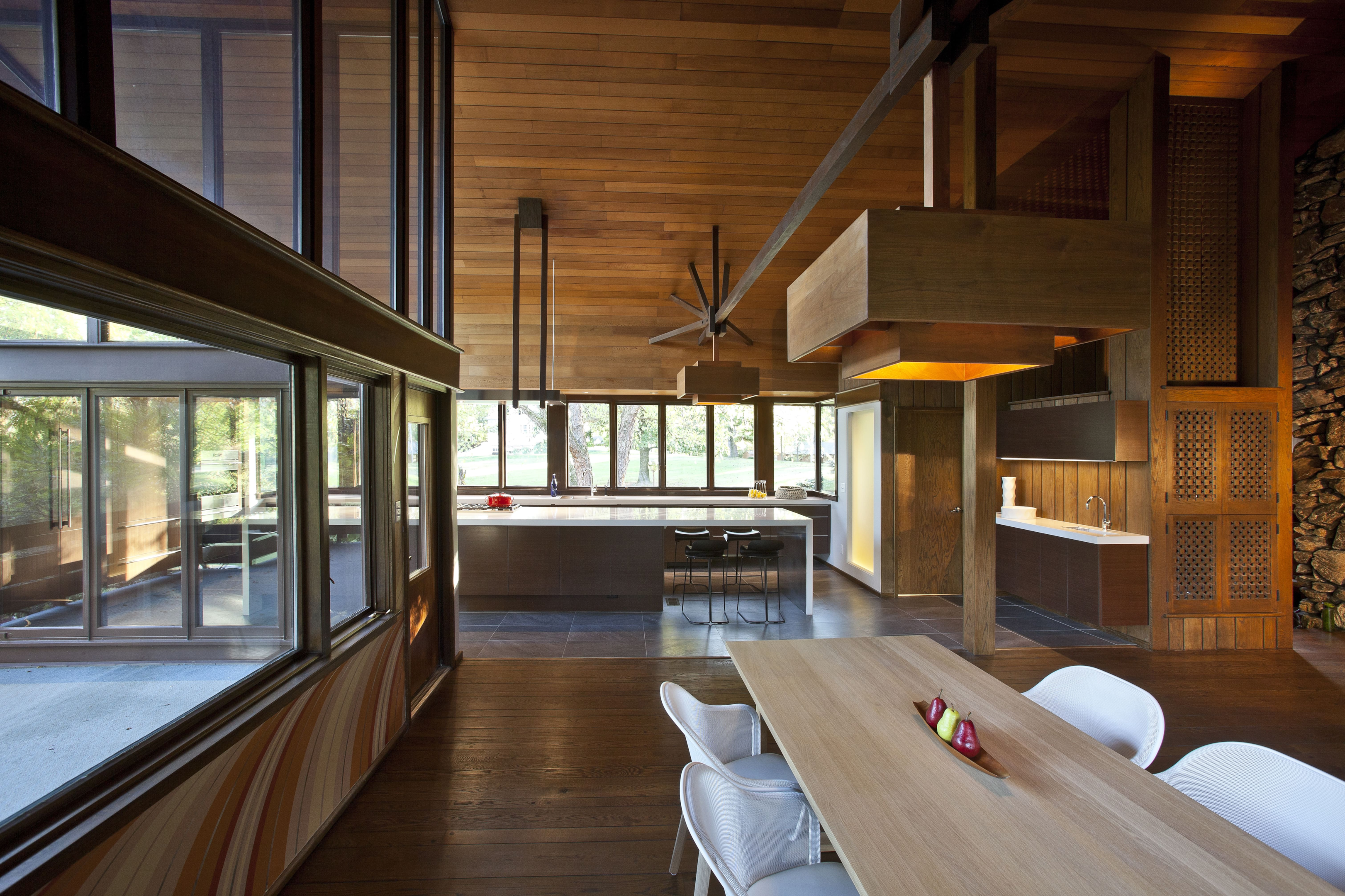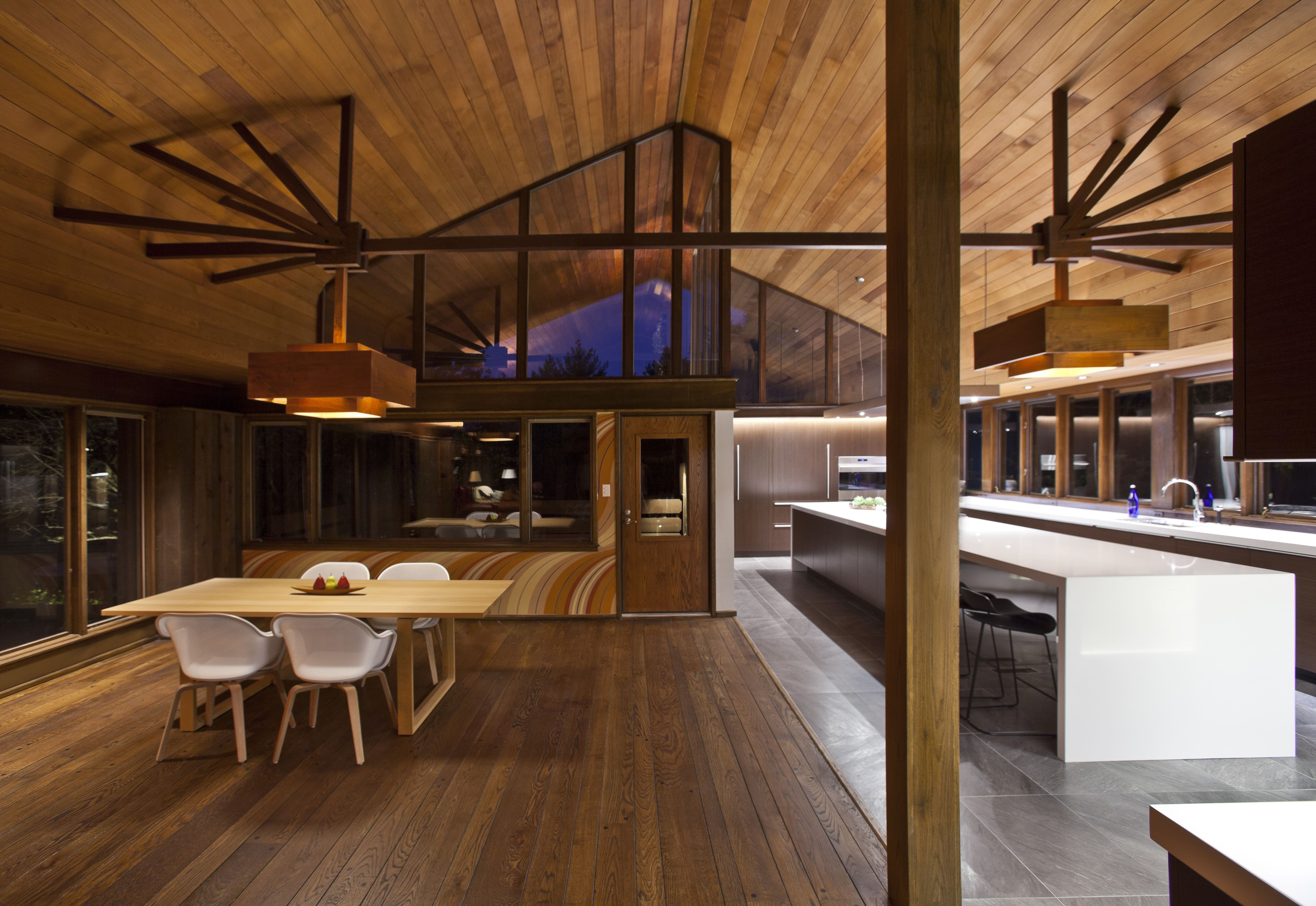
Infusing Modern Elegance into a Mid-century Kitchen & Dining Space
The allure of mid-century modern design has stood the test of time, seamlessly weaving its way through decades to remain a favorite in the hearts of interior design enthusiasts. It’s all about the balance of form and function, simplicity and style, bringing together elements that create spaces that are both inviting and inspiring.
The recent project by RM Interiors, in close partnership with the Drawing Department, focuses on the rejuvenation of a kitchen and dining area, a prime example of mid-century modern design done right. This makeover showcases not just a return to the classic clean lines and organic forms that define the era but integrates them with the demands of contemporary living.
In this 1-part exploration, 1-part design process review, the seamless integration of a mid-century modern kitchen and dining area not only pays homage to the aesthetic values of the mid-20th century but also caters to the practicalities of the 21st. Join us as we explore the thoughtful details and design decisions that breathe life into this space, making it a perfect blend of the past and present.
The Essence of Mid-Century Modern Design
At its core, mid-century modern design champions simplicity, emphasizing clean lines and organic forms that create a sense of ease and openness in any space. This design philosophy is rooted in the idea that beauty and functionality should go hand in hand, without one overshadowing the other. It’s a reflection of a time when designers sought to break away from the ornate and embrace a more straightforward approach to living spaces.
What sets mid-century modern design apart is its distinguished ability to connect interior spaces, such as dining rooms and sitting areas, with the natural world outside, often through green walls and expansive windows, creating a refreshing contrast with white walls.
This is achieved through the thoughtful use of materials, colors, and expansive windows that not only flood the space with light but also offer unobstructed views of nature. The design’s hallmark lies in its restraint and respect for the materials used, allowing their quality and texture to shine through without unnecessary embellishment.
A mid-century modern kitchen and dining area, therefore, isn’t just a place for cooking and eating; it’s a carefully crafted environment where every element works together to evoke a feeling of warmth and welcome. The use of natural wood, from the wide-plank hardwood flooring to the slatted wood ceiling, plays a pivotal role in achieving this ambiance. It brings a touch of nature indoors, creating a cozy yet sophisticated backdrop for everyday living.

In embracing mid-century modern design, the goal is not just to replicate a style from the past but to reinterpret it for today’s lifestyle. It’s about finding a balance between the iconic clean lines and organic forms of the era and the practical needs of contemporary life. This approach ensures that a space is not only visually appealing but also functional and comfortable for its inhabitants.
Material Mastery: Wood’s Warmth and Wonder
In the world of mid-century modern design, the choice of materials is not just a decision; it’s a statement. Wood, with its inherent warmth and versatility, stands out as a material that truly captures the essence of this design era. It’s not merely about using wood for the sake of tradition but selecting and applying it in ways that enhance the room’s overall aesthetic and atmosphere.
The project under discussion makes a compelling case for the thoughtful selection of wood finishes. Here, wood is not just a material; it becomes a medium that ties the entire space together, from the welcoming embrace of wide-plank hardwood floors to the visual rhythm set by a slatted wood ceiling. The rich-toned cabinetry further complements this ensemble, presenting a cohesive narrative of warmth and elegance that characterizes the mid-century modern style.
Choosing wood finishes that harmonize with one another, from the floor to the ceiling, requires a keen eye for detail and an understanding of the material’s natural characteristics, reflecting a careful selection that mid-century enthusiasts would appreciate.
The key is to blend different tones and textures in a way that feels balanced and inviting. For instance, the contrast between the lighter floors and darker cabinets in this project creates a dynamic interplay of light and shadow, adding depth and interest to the space.

Beyond its aesthetic appeal, wood also offers functional benefits. It brings a sense of durability and timeless beauty that can withstand the rigors of daily use. In a mid-century modern kitchen and dining area, where the harmony between beauty and utility is paramount, wood proves to be an invaluable ally.
To incorporate wood into your mid-century modern makeover, consider the overall color palette and lighting of your space. Natural light, in particular, can dramatically affect the appearance of wood, highlighting its natural grain and color variations. By carefully selecting wood finishes that complement each other and your space’s lighting, you can create a mid-century modern kitchen and dining area that feels both timeless and tailored to contemporary living.
Marrying Modernity with Mid-Century
Modernizing a mid-century modern kitchen and dining area involves a delicate balancing act. The goal is to introduce contemporary conveniences while preserving the era’s iconic aesthetic. This challenge often centers around integrating modern appliances and fixtures in a way that complements rather than clashes with the mid-century design ethos.
One of the standout features of the project in focus is the sleek, flat-panel cabinets. Their simplicity and minimal hardware are not just a nod to mid-century design principles but also a practical choice for today’s minimalist tastes. These cabinets blend seamlessly with the overall design, proving that functionality need not be sacrificed for style.

The introduction of white countertops and a central island brings a contemporary edge to the space. Not only do these elements provide a stark contrast to the warmth of the wood, but they also enhance the room’s sense of openness and light. This interplay between old and new elements is crucial for creating a kitchen and dining area that feels both timeless and thoroughly modern.
Modern appliances, paired with vintage flair and perhaps a classic stone or brick fireplace or a sleek buffet for dining room elegance, are essential components of a mid-century kitchen makeover, blending functionality with stylish decor.
The trick lies in choosing pieces that offer the latest technology while sporting a design that echoes mid-century aesthetics. Think stainless steel finishes that mirror the sleekness of the cabinetry or retro-inspired designs that add a touch of nostalgia without feeling outdated.

Lighting, too, plays a pivotal role in marrying modernity with mid-century. Selecting fixtures that draw inspiration from the era’s iconic designs can illuminate the space in style. Modern LED lighting options designed with a mid-century flair can provide the efficiency and functionality required in a contemporary home while still maintaining the design integrity of the space.
Incorporating modern elements into a mid-century modern kitchen and dining area is not about creating a perfect replica of the past but rather about capturing the spirit of the era. It’s about making thoughtful choices that respect the design’s heritage while embracing the convenience and innovation of today’s world. This approach ensures a space that is not only beautiful and functional but also a testament to the enduring appeal of mid-century modern design.
Crafting a Cohesive Kitchen and Dining Area
In mid-century modern design, the fluidity between kitchen and dining spaces is paramount, especially in open-plan layouts where the two areas must harmonize without clear physical boundaries. Achieving this cohesion is as much an art as it is a science, requiring a thoughtful approach to design that respects both functionality and aesthetic appeal.
The secret sauce to crafting a cohesive kitchen and dining area lies in the subtle art of repetition and contrast. By echoing design elements, materials, and colors across both spaces, one can create a visual link that ties them together. However, it’s the strategic use of contrast—be it in texture, color, or form—that adds depth and interest, preventing the spaces from feeling monotonous.
Furniture selection, from tables to chairs, plays a critical role in this balancing act, ensuring each piece contributes to the overall decor and functionality of the dining space, whether it’s adopting an open concept or optimizing for less space.
In our featured project, the dining chairs and table not only reflect mid-century modern design principles with their organic shapes and materials but also serve as a bridge between the past and present. These pieces, while distinct, complement the kitchen’s sleek cabinetry and white countertops, reinforcing the overall design theme without overshadowing the unique character of each area.

Another tool in the designer’s arsenal is lighting. In open-plan spaces, lighting can delineate areas without the need for walls. By choosing fixtures that resonate with mid-century modern aesthetics for both the kitchen and dining area, one can create a sense of unity. Pendant lights over the dining table and under-cabinet lighting in the kitchen, for example, can serve distinct purposes while contributing to the cohesive feel of the space.
Flow is not just about visual continuity; it’s also about movement. The arrangement of furniture and fixtures should encourage easy interaction between the kitchen and dining area, making the transition between cooking and eating seamless and natural. This consideration is crucial in open-plan designs where the kitchen often doubles as a social hub.
In conclusion, creating a cohesive flow between the kitchen and dining areas in a mid-century modern home requires a blend of consistency in design elements and a keen sense of how these spaces interact with each other. It’s about crafting an environment where every detail, from furniture to lighting, works together to create a harmonious whole. This approach not only pays homage to the mid-century modern ethos but also ensures a space that is both beautiful and functional for contemporary living.
In Reflection…
The journey through the mid-century modern makeover of a kitchen and dining room reveals the depth and versatility of this timeless design philosophy. Inspired by RM Interiors’ project, we’ve explored how the right choice of materials, furniture, and modern appliances can transform these spaces into a celebration of mid-century modern aesthetics. Whether you’re embarking on a full-scale renovation or seeking to infuse your home with elements of this iconic style, remember that the essence of mid-century modern design lies in its ability to harmonize simplicity, functionality, and natural beauty.
Are you enjoying the view? Contact an award-winning designer today to access unmatched interior design expertise for your next project.
